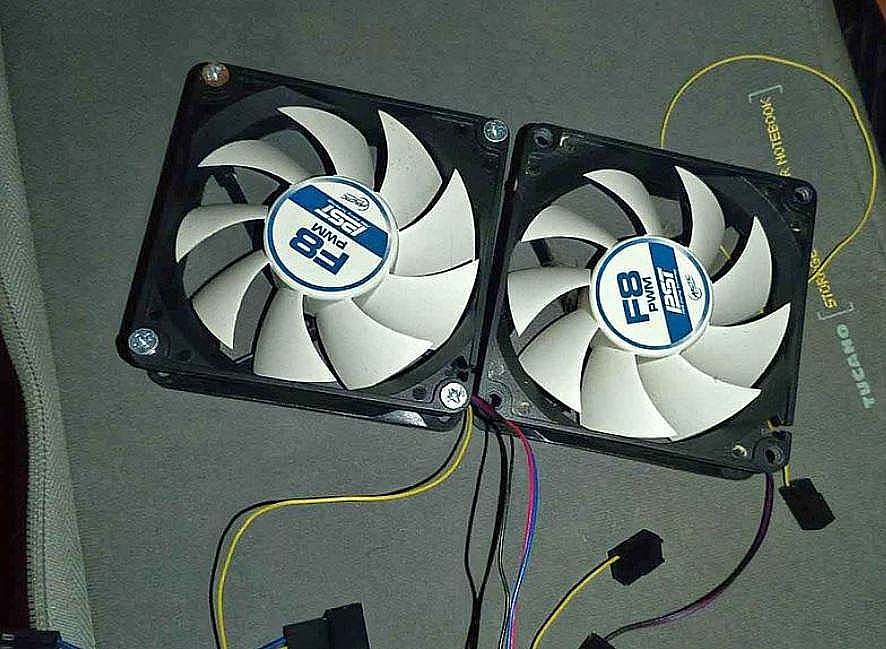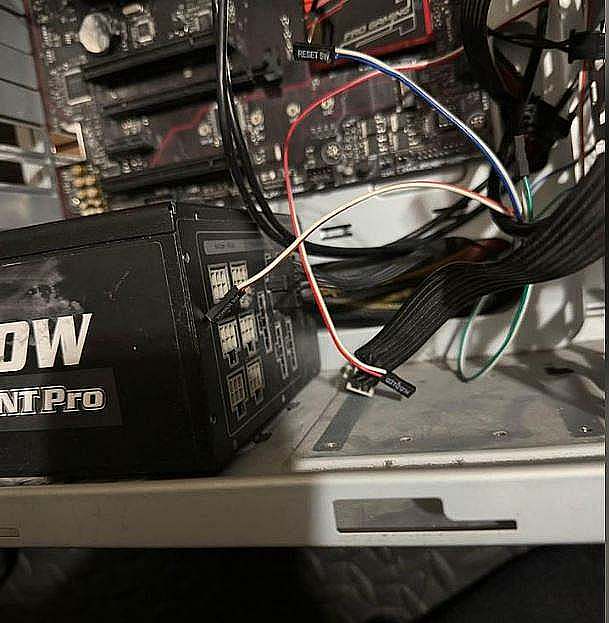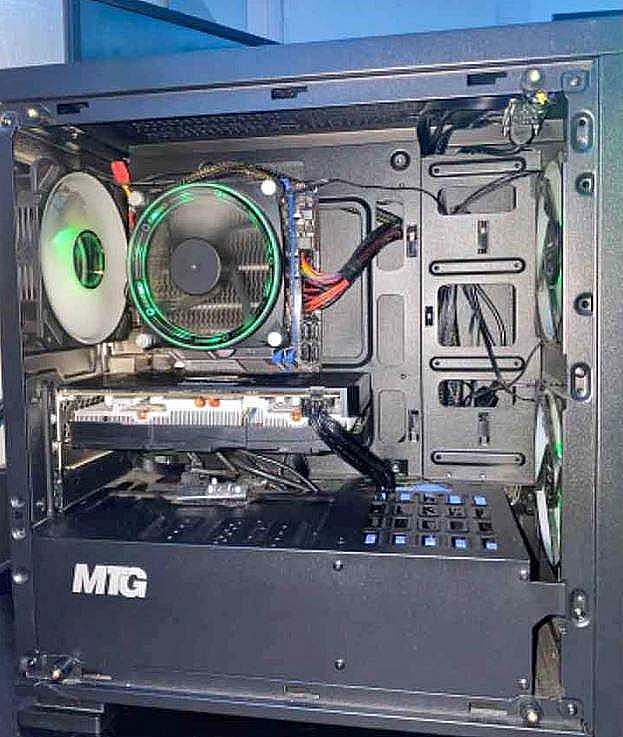5 Useful Tips to Build A Gaming PC – Save $$$ on Your First Build

Building a gaming PC is similar to assembling a LEGO. To build a gaming PC, start by defining your budget. Once you set your budget, next step is to pick compatible parts to build your machine. Beginners make a lot of mistakes and end up losing hard earned cash on building their first gaming PC. I’m not talking about spending money on CPU, GPU, RAM, or PSU. Rather, there are parts like fans, screws, chassis, etc that drastically reduce the overall cost to build a gaming PC. In this guide, I’ve revealed some useful tips for beginners who are new to building gaming PC.
What are useful tips for beginners when building a gaming PC?
To build a gaming PC as a beginner, follow the 5 tips mentioned below.
Tip #1: You Don’t Need More Case Fans
A high-end gaming PC generates a lot of heat, so you need plenty of cooling to maintain the temperature inside your PC case.
A decade ago, adding more case fans was considered an optimal solution for cooling down your machine. But now it’s not about the “quantity of the case fans anymore“.
For new PC builders, it’s important to know about the placement of PC case fans. I have built gaming PCs with only three fans installed (two at the front and one at the back side of the chassis).

When building a gaming machine for the first time, you must know about the type of PC case fans. Generally, PC case fans fall into two categories: intake and exhaust fans.
The intake fans (installed at the front of the case) draw fresh air inside the case whereas the exhaust fans (installed at the back) pull hot air outside the case.
So, the main point is to balance the amount of intake and exhaust fans on your PC case. Note that there is no exact amount or formula to follow when it comes to mounting fans on your PC case.
I usually look at the dimensions and type of the PC case I use for building a PC. In big PC cases where you have a lot of room for air to circulate inside, there’s no need to install too many fans.
On the other hand, when cramping too much hardware inside a small form factor PC case, I’ll consider increasing the amount of in-take fans at the front of the case.
Again, this doesn’t mean you install 3 or 4 fans at the front of the case. Adding too many fans at the front of the case may draw in more dust and other particles.
I prefer the 2:1 ratio (two in-take fans and one exhaust fan) for mid-tower or full-tower PC cases. Remember that we need to create an optimal airflow inside our PC case.
Tip #2: Screws Are In The Case
Assembling your parts and holding them in one place on the motherboard isn’t possible without the screws. Remember that all the screws that you need to build a gaming PC come with your “PC case“.

Some of the best PC case brands offer complete accessory box that includes necessary tools to build a gaming PC.
Tip #3: It’s Not the Hardware Everytime
Optimizing your hardware boosts your gaming performance. I always do small tweaks within the “BIOS” after building a new gaming PC. Restart your PC and hit the “Delete” button to enter the BIOS configuration menu. Remember that every motherboard manufacturer has its dedicated key for entering the BIOS.

Once you are into the BIOS, head over to the overclocking profiles option for Intel XMP or AMD EXPO to get maximum performance out of your RAM.
Don’t forget to check your motherboard manufacturer’s website for any latest drivers. Lastly, you must update your operating system to the latest version to get the most out of your hardware.
Tip #4: PSU Fan Placement
For newbies, it’s hard to figure out the direction of the PSU fan. Remember that your “PSU fan must be facing outside” no matter which type of PC case you have. Modern PC cases have a dedicated section for installing the PSU (usually at the bottom).

Tip #5: Don’t Overlook Motherboard and PC Case
Every gaming PC is built on a foundation, so a motherboard and a chassis set the basic foundation for holding all the parts together in one place.
The motherboard and PC case are the two most important of your gaming PC. Once your motherboard sits easily inside the chassis, it is easier to install the other parts like CPU, GPU, RAM, PSU, etc on it.

Visit PCPartPicker.com to find out if your motherboard easily fit inside your motherboard.
This has happened many times when I bought an E-ATX motherboard that wasn’t going anywhere near the mid-tower PC case. So, I don’t want you to make this mistake as a beginner.
For example, for a PC case with USB 3.0 or USB-C headers at the front of a PC case, you require a motherboard that natively supports these headers out of the box.
What Are Other Useful PC Building Tips?
You may come across tons of PC-building tips in subreddits like r/buildapc, r/pcbuild, etc. Please remember that everything comes from experimenting.
Below are listed some valuable PC building tips that I find the most useful for beginners.
- Remember to remove the plastic from the pins on your RAM stick before installing it on the motherboard.
- Apply a small amount of thermal paste on the CPU cooler (not more than the size of a pea).
- Don’t rush and take your time to build your machine
- Don’t spend too much money on fancy PC cases, rather invest the same money on performance-based parts like CPU, GPU, RAM, etc.
What are the essential components required to build a gaming PC?
The essential components required to build a gaming PC are listed below.
- Motherboard
- CPU
- CPU Cooler
- RAM
- Graphics Card
- Storage
- PSU
- PC Case
Learn more about the parts required to build a gaming PC in detail.
What to buy first when building a gaming PC?
The first hardware to buy when building a gaming PC is the motherboard. The motherboard determines which components such as the CPU, GPU, and RAM you can install in your gaming PC.
Is $1000 dollars a lot for a gaming PC?
Yes, a $1000 is enough to build a decent gaming PC. A $1000 gaming PC lets you play games at 1080p 60fps or 1440p 30fps settings.
How long should a 1000$ PC last?
A $1000 gaming PC will remain sufficient until newer games require more resources than what the system currently offers.

Mosaab Jamal Ahmed brings 12+ years of PC Hardware experience to the table. His journey began in 1998 with a Pentium 1 PC, igniting his lifelong fascination with computer hardware and video games. Over the years, Mosaab has honed his skills in upgrading and building gaming PCs. He has built dream gaming machines for multiple brands and local businesses throughout his career. Mosaab’s areas of expertise are building custom gaming PCs, in-depth PC hardware analysis, and PC hardware reviews.
